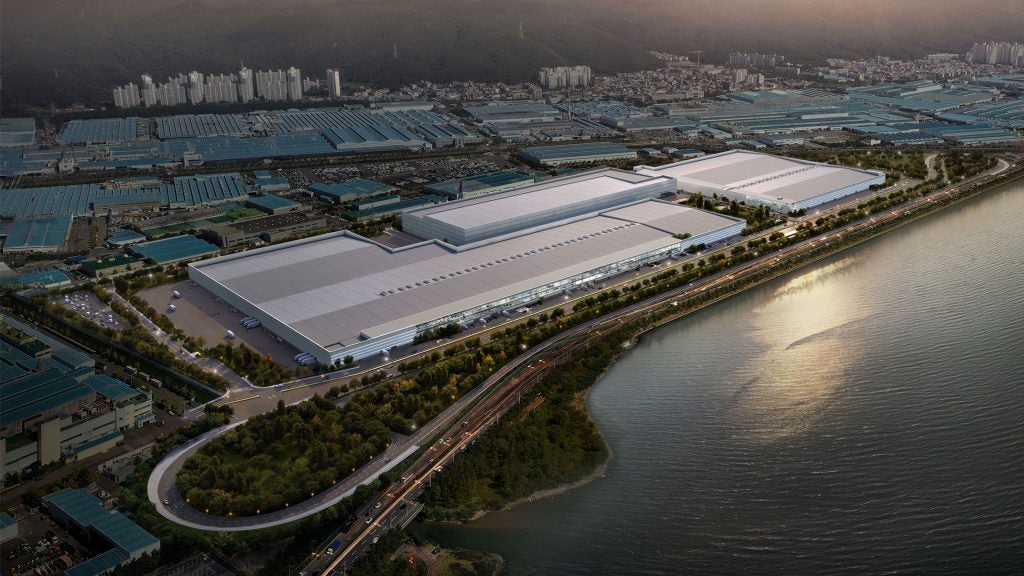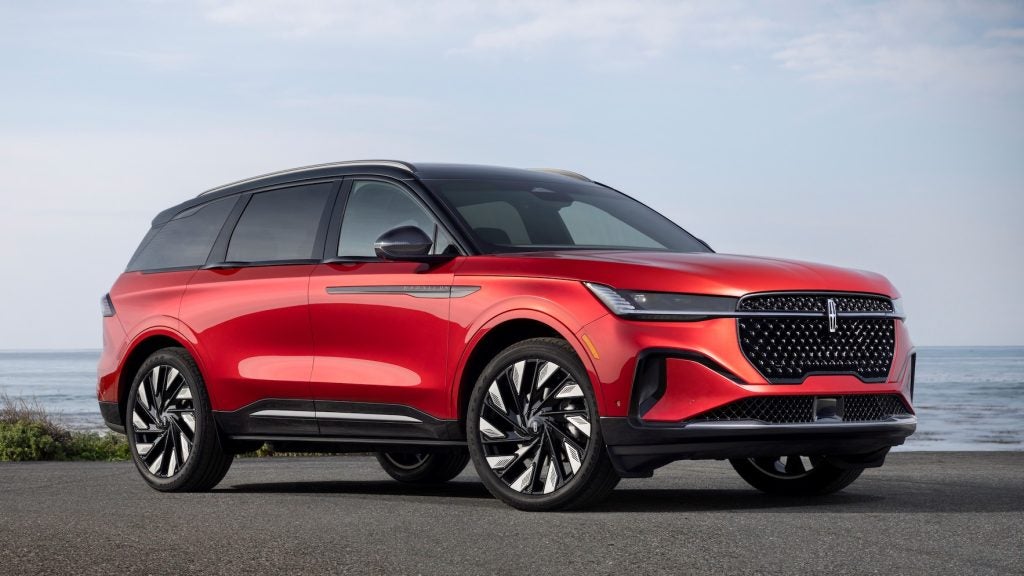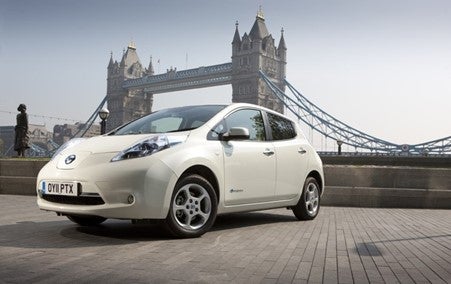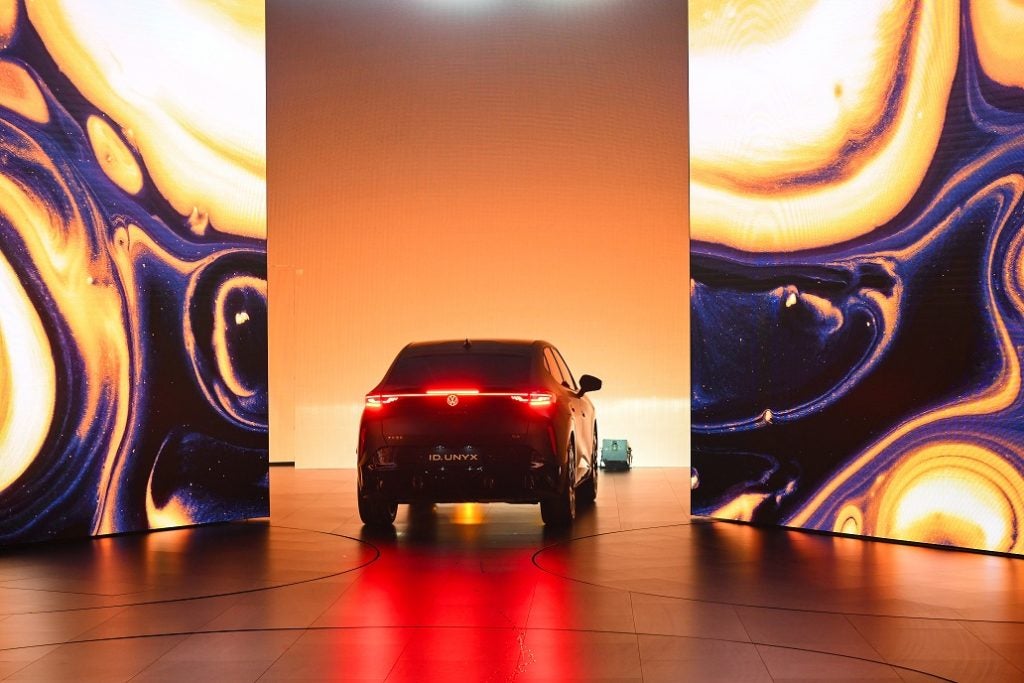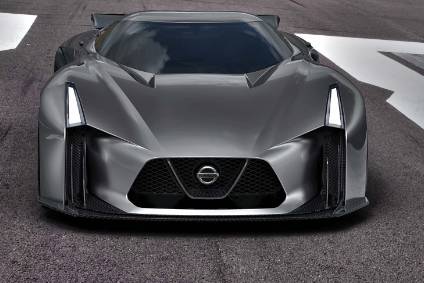
The first of three features examining current and future Nissan brand models takes an in-depth look at passenger cars. The second will examine crossovers, SUVs and pick-ups. In the final instalment, the focus will be on MPVs/minivans, Hybrids, EVs and PHEVs.
A segment/Mini-car/Kei
Nissan and Mitsubishi Motors (MMC) signed an agreement in 2011 for the creation of a mini-vehicle (‘Kei’) joint venture, NMKV. The Dayz and Dayz Highway Star were the first models for Nissan. The eK Wagon and eK Custom are their Mitsubishi equivalents. All are built by MMC.
Sales, which are restricted to the Japanese market, began in June 2013. Facelifted cars went on sale in October 2015.
The next generation models, which will use the same platform, are due out in 2018. These should again be manufactured by MMC at its Mizushima plant.
In March 2013, Nissan announced that it would launch a so-called ‘super height’ tall mini-wagon in Japan during early 2014. The Dayz Roox had its world premiere at November 2013’s Tokyo motor show and went on sale in Japan three months later. There is an equivalent model for Mitsubishi, the eK Space. This also went on sale in Japan in February 2014, replacing MMC’s Toppo.
How well do you really know your competitors?
Access the most comprehensive Company Profiles on the market, powered by GlobalData. Save hours of research. Gain competitive edge.

Thank you!
Your download email will arrive shortly
Not ready to buy yet? Download a free sample
We are confident about the unique quality of our Company Profiles. However, we want you to make the most beneficial decision for your business, so we offer a free sample that you can download by submitting the below form
By GlobalDataThe Dayz Roox should be replaced in 2020 after a six-year production run. Before then, a mid-life facelift for the current vehicle is due on sale during the third quarter of this year. Like the Dayz, Dayz Highway Star and their two Mitsubishi twins, the next Roox should be built at Mizushima.
An additional Kei class model should appear later in 2017. Mitsubishi Motors and the Renault-Nissan Alliance issued a statement to the media in November 2013 concerning a proposed expansion of NMKV.
The companies said at the time that they intended to “co-develop a new small-segment car including a specific electric version that can be sold globally. The basis for this product will be from a jointly-developed ‘Kei car’ platform of the type popular in the Japanese domestic market. Further details of all products, markets and manufacturing will be announced separately”.
Confirmation of continued co-operation was announced in October 2015.
B segment/Sub-compact
The fifth generation Micra went into production in January.
The Renault Nissan Alliance announced in April 2013 that the then next Micra for European markets would be built in France at the rate of 82,000 cars a year from 2016. The fourth generation car for that region was sourced from India.
The new model will be built in China too, and is expected to also be made in the same other countries as the fourth generation Micra/March*: Mexico, China, Indonesia and Thailand. *In many markets, including Japan, Nissan’s global small car has always been sold as the March.
The Micra is the first vehicle for the Alliance’s CMF-B architecture. There should be a facelift in the first or second quarters of 2020. The sixth generation March/Micra is expected to be released from late 2023.
The current Cube went in production in October 2010. The third generation of this unusually-styled small car had its world premiere at the Los Angeles auto show in November 2008.
In the USA, where the 2009 model year Cube went on sale in May 2009, the car came only with a 1.8-litre engine. In Japan, where it went on sale in November 2008, it has a 1.5-litre engine. In Europe (introduced in Q4, 2009) a 1.6- and a 1.5-litre diesel were offered. Slow sales in North America and Europe saw this model discontinued in those regions after just a few years. Japan remains the main market. No replacement is expected.
The Russian market’s Almera, another B segment model, is one of two cars to use the model name. It uses the aged Alliance P3 platform and the car is a heavily modified version of the second generation Nissan Bluebird Sylphy sedan. The original first went on sale in Japan in 2005.
Revealed to the world’s press at the Moscow motor show in August 2012, the Almera is built on a special line within the giant AvtoVAZ works at Togliatti. Production began in December 2012. A facelifted model was delayed due to cost cutting but should be out later in 2017. A new generation model is due for release in 2020.
The Almera built by AvtoVAZ should not be confused with the Almera which is made mainly in Thailand. That car is a far more modern design. In other markets, this model is instead sold as the Nissan Versa, Sunny, Tiida or Latio. Its world premiere was at the Guangzhou motor show in December 2010. Production for the Chinese market followed later that month.
Production in India commenced in August 2011. Nissan Motor India also exports the Sunny to markets in West Asia and Africa. Renault India launched the Scala, a version of the Sunny in September 2012 but that car has not been a success.
Nissan North America, meanwhile, revealed its 2012 model year Versa Sedan, an all-new model, at the New York auto show in April 2011. It is the same basic car as Nissan China’s Sunny. The 2012MY Versa Sedan is made in Mexico and sold there as the Tiida. It went on sale across North America from July 2011.
NNA’s Versa Note is not a five-door version of the Versa but instead a Mexican-made version of the second generation Nissan Note. The current shape Versa hatchback for North America was new for that region’s 2013 model year. Nissan Canada discontinued the Versa sedan at the end of its 2014 model year. Its effective replacement was the 2015 Micra. The Versa sedan continued in the US for the 2015 model year and the Micra is not sold in the US.
The 2015 Versa sedan had its debut at April 2014’s New York auto show – this was the first time a facelifted car had been seen. A facelifted Latio then went on sale in Japan in October 2014.
As mentioned earlier, Nissan Motor Thailand launched its own locally-made version of the car, the Almera, in October 2011. The Japanese market Latio is a Thai import. Meanwhile, Nissan’s local partner, Stallion Group, began Almera assembly at a plant in Lagos from August 2014: Nigeria is a small but increasingly strong market for Nissan Motor.
The Sunny is assembled by another of Nissan’s partners in Vietnam. There, Tan Chong Motor began assembling the Sunny in June 2013.
In July 2013, just-auto.com reported that the Versa (sedan) would enter production at Nissan’s Resende plant in Brazil in July 2014. The plant opened in April 2014, with the March and a 1.6-litre flexfuel engine its first products. In January 2015, Nissan stated that it would add production of a 1.0-litte three-cylinder engine at Resende, with the Versa to be the first car to be fitted with it.
In September 2013, Nissan announced that the Sunny would be the first model to be assembled at a joint venture plant in Myanmar (Burma). Tan Chong Motor (Myanmar) Co., Ltd was granted the rights to assemble and distribute Nissan vehicles locally. There was an update on this in February 2016. Sunny assembly commenced in January 2017.
The project, an 80 acre (324,000 m2) industrial complex, would be the largest automobile manufacturing site in Burma and the first in the Bago region, Nissan claimed in 2013. The plant, which started off as an SKD operation before moving to CKD assembly, was constructed and is operated by Tan Chong Motor (Myanmar) Co., Ltd. Tan Chong Group is the sole and exclusive distributor for Nissan vehicles in Malaysia, Singapore, Vietnam, Cambodia, Laos and Burma.
The replacement for the Versa/Sunny/Almera/Latio model series is expected to use the CMF-B architecture with the first cars going into production during 2018.
C segment/Compact
One of Nissan Motor’s oldest models is the Wingroad, a compact wagon which has been built and sold in Japan for more than 11 years. The current car, a replacement for a model of the same name, went on sale in Japan in November 2005. It is effectively a wagon version of the first generation Nissan Tiida and offers the choice of 1.5- and 1.8-litre petrol engines.
A Van version was introduced in December 2006, the Nissan Ad. The Ad and Wingroad are built at different plants, however. No direct replacement for either is expected.
Nissan’s equivalent to the Toyota Corolla/Auris, VW Golf, Ford Focus, Honda Civic and Mazda3 has by contrast never been one global model. Instead, such a car has several names and has been marketed with most success in North America, Russia, Japan, China, Taiwan, Thailand and certain other countries in Asia.
The current generation of the Chinese market’s Dongfeng Nissan Sylphy sedan previewed Nissan North America (NNA) & Russia’s Sentra, as well as Nissan Australia’s Pulsar sedan. The USA has for many decades been this model’s largest market.
The Sylphy had its global debut at the Beijing motor show in April 2012, production getting underway first at a Dongfeng Nissan plant in China two weeks later. NNA then began building the seventh generation Sentra at its Canton (US) plant from Q4, 2012. The Sentra, is like the previous generation model, also made at the Aguascalientes plant in Mexico. In September 2013, Yulon Motor began building the Sentra at its San Yi plant in Taiwan. It replaced the then seven-year old Sylphy.
A potential preview of a future Sentra NISMO (Nissan Motorsport) premiered at the LA auto show in November 2013. It was powered by a 240hp 1.8-litre turbo engine. The production version finally appeared at the 2016 LA show. It was an addition to North America’s 2017 model year Sentra model range.
Nissan announced Russian production of the Sentra as it revealed the local market’s car at the Moscow motor show in August 2014. The build location is the Izhevsk plant, which is controlled by AvtoVAZ.
The replacement model might be offered with a hatchback bodystyle in North America, as well as a sedan. Generation eight is due for release from 2018. It will be based on the Alliance CMF-C/D architecture.
A less successful model is the Pulsar five-door hatchback, also known as the Tiida. Nissan stated in April 2012 that 80,000 units per annum of a ‘midsized’ C-segment hatchback model would be built at its Sunderland plant in England from 2014. The model in question was expected to be either the Tiida or a car based closely upon that model. However, in December 2012, these plans changed: instead a C-segment Infiniti model would be built there in its place (the Q30, and also the QX30).
According to Nissan Europe’s then chairman Trevor Mann, the model that Nissan would make at its Barcelona plant from late 2014 would use the Alliance’s CMF architecture. Mann was speaking to journalists at the Geneva motor show in March 2014. Nissan Europe’s man said at that time that the division expected to make 80,000 units annually of the car. The Renault Megane which went on sale in late 2015 is closely related to this model. The Nissan Qashqai and X-Trail also use versions of CMF.
The car had its public debut to be at October 2014’s Paris motor show. Despite being claimed to use the CMF architecture, the model has the same 2,700mm wheelbase as Nissan’s multiple other C segment/Compact five-door hatchbacks such as the Leaf, Tiida (China)/Pulsar Hatch (Australia).
Nissan Europe’s car has a front end which is similar to the X-Trail and Qashqai. It is 4,385mm long, which makes it 115mm lengthier than a five-door Golf. The two launch engines were an 84kW (115PS) 1.2 DIG-T petrol and an 80kW (110PS) 1.5 dCi diesel. A preview of a possible future NISMO derivative was revealed alongside the Pulsar 1.2, 1.5 and 1.6 at the Paris show. However, this car is now unlikely to be launched.
Despite being an especially roomy car, the Pulsar has not been a strong seller for Nissan Europe, making it doubtful that the replacement model due out in other regions during 2021 will be built at Barcelona.
Nissan China revealed its version of the Pulsar at the Beijing motor show in April 2016. This is its Tiida, which is a locally built model. This replaced a car of the same name. Apart from some small differences in their grilles, the Pulsar and Tiida look identical.
C-D segment
In contrast to the Tiida, the Lannia, sized halfway between the C and D segments, is specific to China. Dongfeng Nissan launched this 4.7m long sedan at the Chengdu motor show in September 2015.
The production car was inspired by the Friend-Me and Lannia concepts and serves as Nissan China’s Bluebird successor. The first of these debuted at the 2013 Auto Shanghai and the second at April 2014’s Beijing show. The Chinese name of the 2014 concept was ‘lan niao, yin xiang’. This, Nissan said at the time, was a reference to the Bluebird.
A prototype of the production model premiered at Auto Shanghai in April 2015. Six months later, the Lannia went on sale in China. There should be a facelift in 2019, and a Lannia replacement in 2022. That car should again be based upon CMF-C/D.
D segment/Mid-size
NNA’s Smyrna plant was the first facility to build the fifth generation Altima. Its global debut was at the New York auto show in April 2012. This sedan is easily the best selling Nissan car in the USA.
Production started in May 2012, with sales in the US, Canada and Mexico commencing the following month. Production at Canton, also in Mississippi, commenced in June 2012. Exports to the Middle East followed from late 2012.
Nissan’s two US plants which manufacture the Altima had their capacities raised so that they could build a combined potential 400,000 units of the car per annum. The majority of this was thanks to the addition of a third shift at Smyrna.
Production in Thailand was added in September 2013. There, the car is sold as the Teana, but Nissan exported cars to Australia, badged as the Altima. The Aussie market car, imports of which recently ceased, had a 3.5-litre V6, unlike North America’s Altima, which offers only four-cylinder engines.
The Teana had its Japanese debut at November 2013’s Tokyo motor show. It was launched locally two months later, and is an import from Thailand.
The Dongfeng Nissan joint venture also builds the Teana, a version of the Altima, in China. The current generation model was announced in February 2013. Unlike China’s previous Teana, the current one is not available with V6 engines. A long wheelbase model, the Teana VIP, was launched at November 2013’s Guangzhou motor show.
In March 2014, Nissan Europe revealed plans to build the Teana in St Petersburg from 2015.
There was a major facelift for the Altima for North America’s 2016 model year: the car was revealed to the media in September 2015. It went on sale just ahead of its public debut at November 2015’s LA auto show. There were no changes for the 2017 model year.
The sixth generation generation Altima/Teana is due for release in 2018. Some of the styling details are expected to have been previewed by the Vmotion 2.0, an Altima sized concept which premiered at the Detroit motor show in January 2017. The production model should debut at the 2018 New York auto show. The platform is likely to be a stretched version of CMF C/D.
In China, Thailand, Japan, Russia and certain other countries, the Teana model name should again be used.
E segment/Large
The current Maxima, new for North America’s 2016 model year, had its world premiere at the New York auto show in April 2015. It looks similar to the Sport Sedan, a four-door coupe concept which Nissan revealed at the Detroit motor show in January 2014.
The Maxima is powered by a 224kW (300hp) 3,498cc V6. Production commenced in April 2015. North America is the car’s main market, as ever.
There were only minor changes for the 2017 model year. There should be a facelift for the 2019 model year and a replacement in CY2022.
Small scale assembly commenced at Dongfeng Nissan’s Xiangyang plant during the second half of 2016. With the ongoing decline of the Large segment in the USA, China may well become the largest market for the next Maxima.
F segment/Luxury
The current generation Fuga, a luxury sedan, was revealed at the Tokyo motor show in October 2009. It went on sale in Japan, its main market, the following month. The standard wheelbase Infiniti Q70 and Nissan Fuga are more or less the same car. Details of the Cima, an even larger luxury sedan, will follow in the electrified models section of Nissan future models part 2. That vehicle is a rebadged Infiniti Q70L Hybrid for the Japanese market.
The Fuga underwent what Nissan called a “big minor change” (same facelift as the Q70) in January 2015. The Fuga should be replaced by the next Infiniti Q70 in late 2017.
Sports cars
The Fairlady Z, which is the name for the Japanese market, sells in very small volume there. Better known as the 370Z, its name in other countries, the Z nonetheless is now a rare sight as a new car in any market due to the model’s age. Even in the USA, just 1,248 were delivered to buyers in the first quarter of 2017.
The 370Z had its world premiere at the Los Angeles show in November 2008. This hatchback (NNA calls it is a ‘coupe’) was followed up by a fabric-roof roadster at the New York show in April 2009. Japan’s Fairlady Z was announced in December 2008. The Fairlady Z roadster followed in October 2009. The canvas roof is supplied by CTS (Magna Car Top Systems) from a base in Japan’s Kanagawa Prefecture.
A facelifted 370Z had its global debut at the Chicago auto show in February 2012. The 370Z NISMO was then announced in January 2013. It has its suspension lowered by 10mm and has slightly more power. The Fairlady Z NISMO for the Japanese market went on sale there in June 2013. A revised 370Z NISMO was announced by Nissan North America in May 2014. This was that region’s 2015 model year car. Its public debut was at the Paris motor show in October 2014.
There is a facelift for the 2018 model year, this being previewed by the 2018 370Z Heritage Edition which premiered at the New York auto show in April.
The Fairlady Z/370Z replacement is due for release in late 2018. There had been rumours about this model becoming a crossover but these are said to be false. Some sources had claimed that the Gripz, a concept at the 2015 Frankfurt IAA, served as a preview. This design study was meant to take the Z car series back to the days of the 240Z/Fairlady Z as a rally car.
Nissan has a major problem on its hands in trying to replace the Z. The segment in which it competes has shrunk due to people shifting to crossovers and SUVs. The solution could well be to make a new Z smaller and cheaper, so more of a direct rival to the Subaru BRZ, Toyota 86/GT86, Mazda MX-5 and Fiat/Abarth 124. It should again be manufactured at Tochigi in Japan on a Nissan RWD architecture.
Nissan’s most expensive two-door car is the R35 GT-R. This supercar went on sale in Japan in December 2007, three months after its debut at the Tokyo show. The first export market was North America, where cars reached US dealers in July 2008, with LHD European markets then receiving their first GT-Rs in November 2008.
Nissan developed what it terms a ‘Premium Midship’ platform for this car with the gearbox mounted over the rear axle. The 3.8-litre V6 has two turbochargers, drive is to all four wheels and the only transmission is a six-speed automatic with paddle-shifters.
A facelifted model premiered at the Paris motor show in September 2010 and power went up too. North America’s 2012 model year GT-R had a stated output of 530hp, versus 485hp for the previous model year car.
The 2013 model year GT-R was announced by Nissan North America in November 2011. It went on sale in the US market in January 2012. The main change was 15 more horsepower for a new total of 545hp.
Another variant, the 591bhp GT-R NISMO went on sale in Japan in December 2013. It was rolled out globally over the course of 2014. Its debut was in November 2013 at the LA and Tokyo motor show press days (they were on the same day). In North America this derivative was new for the region’s 2015 model year.
A facelifted GT-R premiered at the New York auto show in March 2016. New for North America’s 2017 model year, it gained 20hp for a total of 565.
R36, the next generation GT-R, has been delayed many times. It is now expected to be revealed in the fourth quarter of 2019 at the Tokyo motor show. The R36 GT-R will be a hybrid.
Nissan revealed the Concept 2020 Gran Turismo at the 2015 Goodwood Festival of Speed (see pic above), and followed this with the slightly restyled and red-painted Concept Vision 2020 Gran Turismo at October 2015’s Tokyo motor show. Each is expected have provided a preview of the R36.
Future model plan reports for other manufacturers can be viewed in the OEM product strategy summaries section of just-auto.com.
Future product program intelligence
More data on vehicle lifetime and future product plans is available in PLDB from QUBE.



